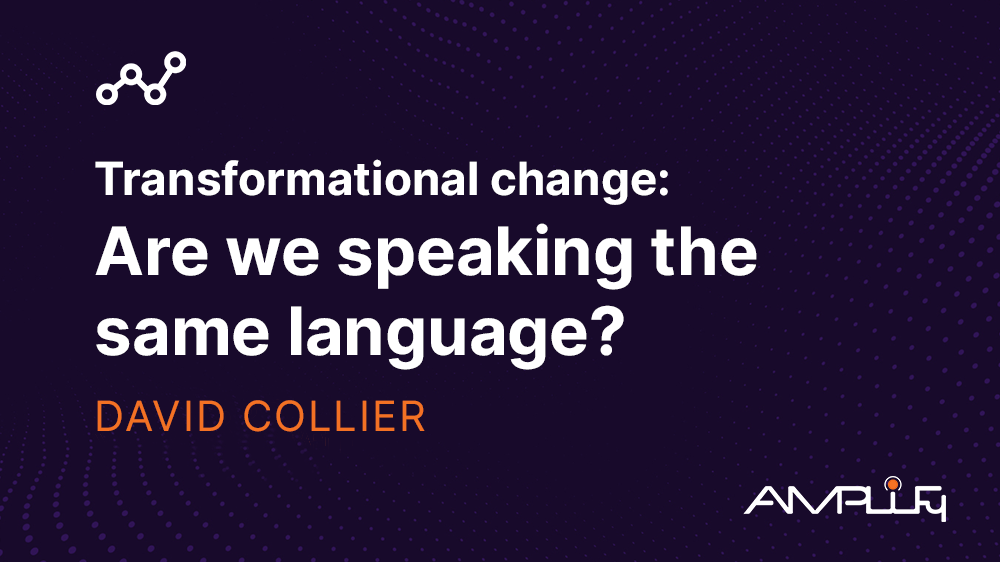Transformational Change: Are we speaking the same language
Transformational Change: Are we speaking the same language
“Transformational change” is often championed as one of the paths to success.
Companies set their sights on evolutionary shifts in operations, business models, and in organizational cultures. Yet, most often a crucial disconnect exists between these lofty ambitions of transformational change and the practical understanding of its true value versus its cost.
The Real Cost of Transformational Change
First of all, I think a lot of people are used to (and a bit burnt out over…) the term “Transformational Change” without understanding that it’s not just terminology. So to get that out of the way, let’s start with a definition:
“Transformational change refers to a fundamental shift in an organization's structure, processes, or culture aimed at significantly improving its performance or achieving new strategic goals. It involves comprehensive and deep alterations that affect the entire organization rather than incremental adjustments.” (Harvard Business Review, 2020)
Transformational change involves sweeping alterations that demand extensive resources, meticulous planning, and strategic execution. However, many organizations embark on these ambitious projects without fully grasping the operational implications. Research from the Harvard Business Review highlights that the majority of transformational initiatives fail due to poor planning and inadequate resources (Harvard Business Review, 2020).
Ironically, when financial constraints hit, change management—the discipline essential for guiding and supporting these large-scale changes—is often among the first areas to face budget cuts or being eliminated altogether.. This is comparable to starting a major home renovation project and then eliminating the budget for project management. The outcome? Increased chaos, higher failure rates, unmet objectives and staff disengagement. Nobody wants to live and work in that mess.
The Value of Incremental Change
Many organizations can derive substantial value by focusing on incremental improvements rather than committing solely to wide transformational change.
Incremental changes are smaller, manageable adjustments that address immediate needs and build momentum without the upheaval of larger-scale transformations. A study published in the Journal of Change Management underscores that incremental change can often lead to better outcomes and reduced resistance compared to radical change (Journal of Change Management, 2021).
For instance, rather than overhauling an entire system, implementing a series of smaller, targeted updates can significantly enhance productivity and employee satisfaction. These incremental steps not only offer immediate benefits but also lay the groundwork for more extensive improvements in the future.
What can you do now? Practical Steps for executives
As an executive, effectively balancing transformational goals with the reality of value versus cost is crucial.
Here’s how to navigate this balance effectively:
- Define True Value: Understand the real value of change for your organization. Assess whether the anticipated benefits justify the costs and resources required. Bring your staff on the journey, build their buy-in & illustrate “What's in it for them…”
- Invest Wisely in Change Management: Recognize that change management is an investment in success, not a cost to be cut. According to Prosci, organizations with strong change management practices are six times more likely to meet their project goals (Prosci, 2023).
- Embrace Incremental Improvements: Focus on smaller, actionable changes that can provide immediate value. Incremental improvements can mitigate risks and produce quick wins, leading to long-term benefits.
- Communicate and Engage: Engage with your team to understand their needs and how incremental changes can address them. Effective communication and engagement are critical for gaining support and ensuring successful implementation.
- Monitor and Adapt: Regularly assess the impact of incremental changes and be prepared to adjust your approach based on feedback and results. Continuous monitoring helps refine strategies and achieve desired outcomes.
While transformational change can promise significant results, the journey to long-term success often begins with targeted, incremental improvements. By focusing on the value these smaller changes provide and ensuring adequate investment in change management, organizations can navigate the complexities of transformation more effectively.
So, the next time your organization sets its sights on transformational change, remember: the real impact lies not just in the scale of the investment but in the value it delivers. Begin with manageable steps, plan strategically, communicate early and often and let each incremental change contribute to meaningful purpose and progress.
Sources:
Harvard Business Review, (2020): How Incremental Change Can Be More Effective Than Radical Change.
Prosci, (2023): The Prosci Best Practices in Change Management.




